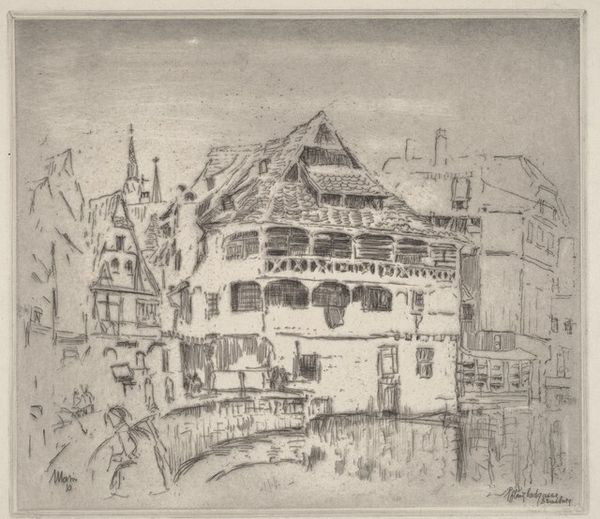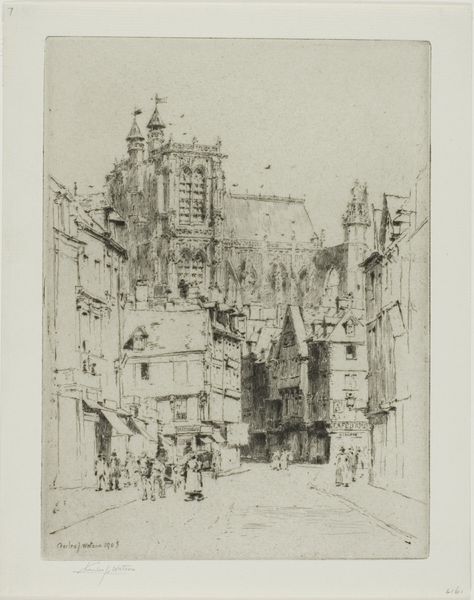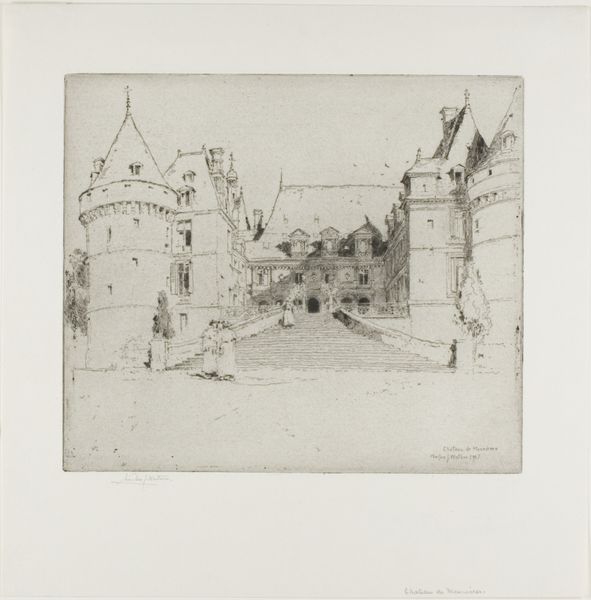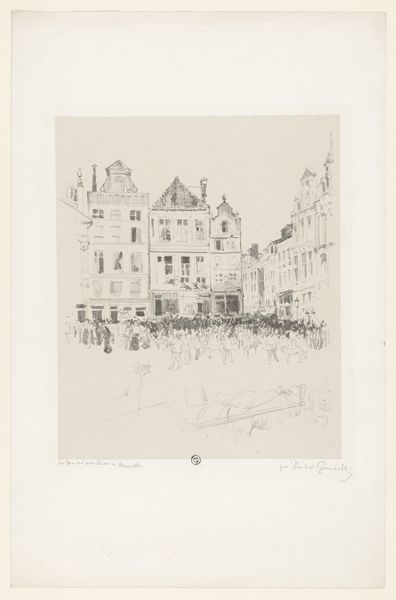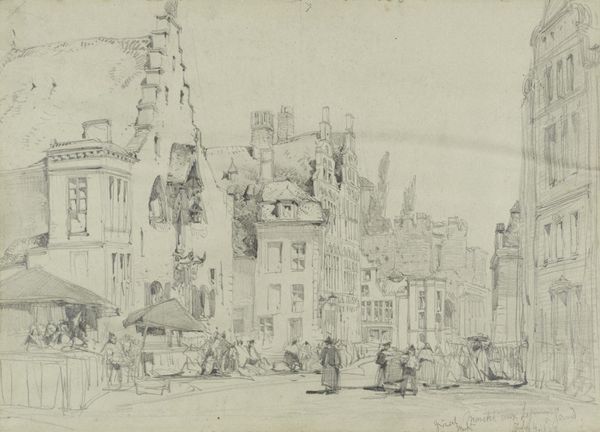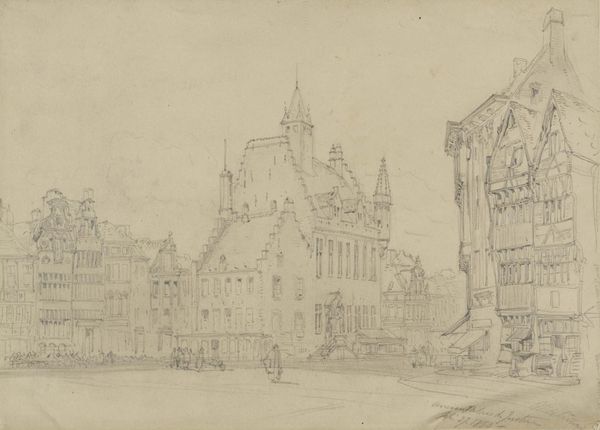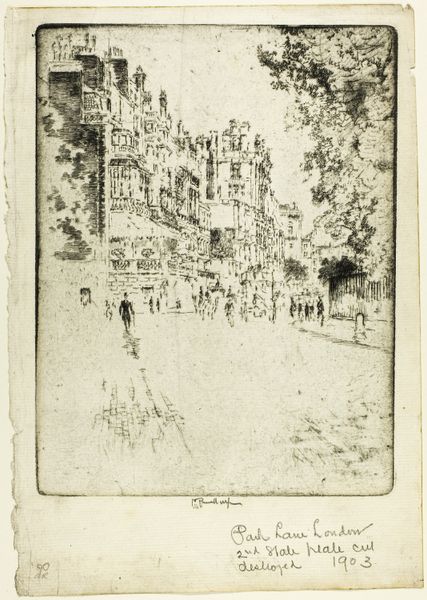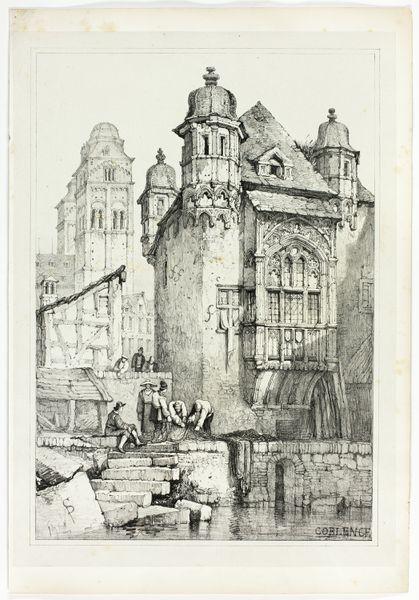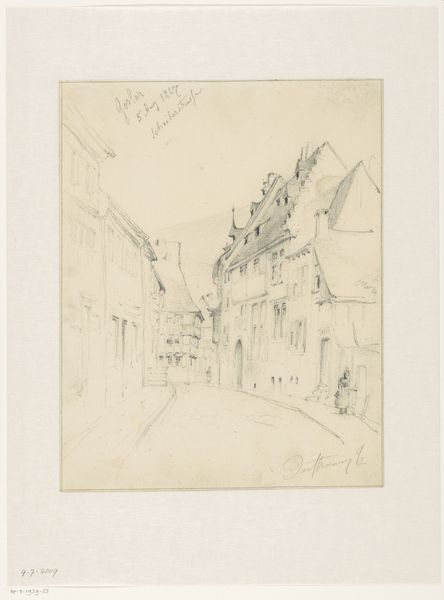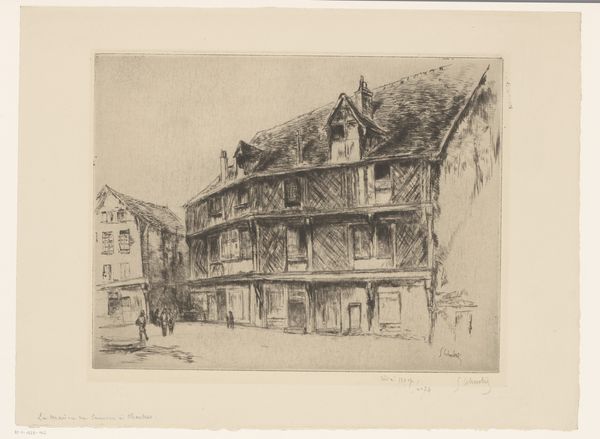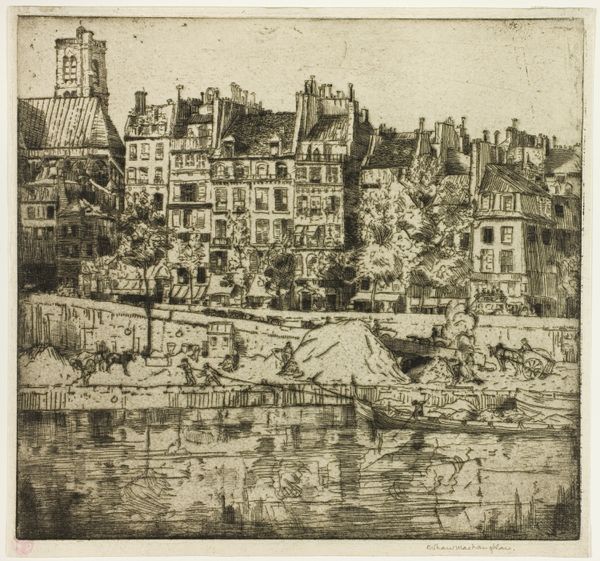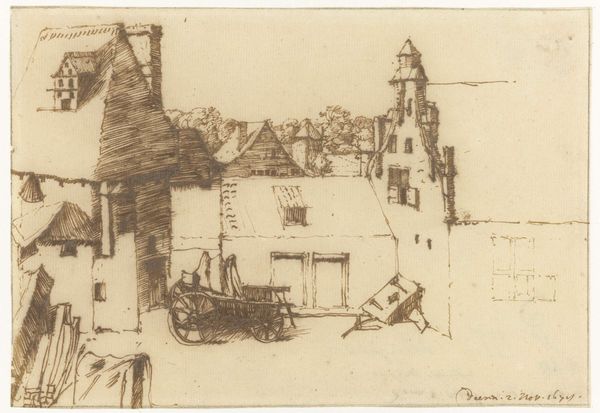
Dimensions: 178 × 241 mm (image/plate); 216 × 274 mm (sheet)
Copyright: Public Domain
Editor: Charles John Watson's "Abbéville," an etching from 1904, immediately strikes me with its delicate, almost ephemeral quality. The scene of a French town square bustling with people is rendered with such fine lines. How should we interpret this work in its historical moment? Curator: Well, consider that printmaking, especially etching, offered artists a way to democratize art. Multiple impressions could be made, reaching a wider audience beyond the elite circles of painting patrons. Watson, working at the turn of the century, was participating in this expanded public sphere. The choice of subject—a seemingly ordinary town square—is also telling. Editor: In what sense? Is it typical subject matter? Curator: It moves away from grand historical narratives or portraiture. Instead, it presents everyday life, hinting at the growing importance of the middle class and their experiences. The etching style itself is significant. The loose lines and atmospheric quality align with Impressionist ideals, which had a profound impact on how artists approached and depicted the world around them. How do you see the towering cathedral functioning in relation to the commerce at the base? Editor: It seems to ground the work, in tension with the “everydayness” you described. Curator: Indeed, the placement of the church looms over these “ordinary” activities. How do we reconcile these two, sacred and mundane? Editor: Considering your comments, I am thinking about art's increasing role in reflecting the lived experiences of a broader public, with institutions, socio-economics and power dynamics. Curator: Exactly. "Abbéville" becomes a window into the values and the changing social fabric of the time. Thanks, these comments gave me something to reflect upon.
Comments
No comments
Be the first to comment and join the conversation on the ultimate creative platform.

